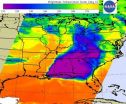(Press-News.org) New York, NY, April 30, 2014—States made little progress in improving health care access, quality, and outcomes and lowering costs in the five years preceding implementation of the major coverage provisions of the Affordable Care Act (2007-2012), according to the Commonwealth Fund's third state health system scorecard. The majority of states declined or failed to improve on two-thirds of the 34 scorecard indicators that could be tracked over time.
Wide gaps among states persisted since the last scorecard, with top states sometimes performing two to eight times better than the lowest-performing states. For example, the rates of elderly receiving high-risk medications, children hospitalized for asthma, Medicare hospital readmissions, and potentially preventable deaths before age 75 were more than twice as high in states near the bottom of the scorecard compared to states with the best performance.
The report, Aiming Higher: Results from a Scorecard on State Health System Performance, 2014, ranks the health systems of every state and the District of Columbia based on 42 health care measures, 34 of which are used to reveal trends between 2007 and 2011-12. All states saw meaningful improvement on at least seven of the 34 trend measures. However, more than half of states lost ground on at least 9 indicators.
Indicators for which performance improved in a majority of states were often the targets of concerted federal and state efforts. Gains in safe prescribing for the elderly, reductions in avoidable hospital admissions and readmissions, higher childhood vaccination rates, and fewer cancer-related deaths chiefly resulted from greater attention being paid at both the national and state levels, including investment to promote better health outcomes.
For example, Vermont—which ranks near the top of the scorecard, along with Hawaii, Massachusetts, Minnesota, and New Hampshire—has been a national leader in guaranteeing access to care and investing in primary care. In these states, between 5 percent and 17 percent of working-age adults were uninsured in 2011-12. In contrast, the states at the bottom of the scorecard—Mississippi, Arkansas, Oklahoma, and Louisiana—had adult uninsured rates between 22 percent and 28 percent in 2011-12.
"This state scorecard underscores the importance of national and state actions to ensure that no matter where a person lives, they have access to an affordable, high-quality health system," said Commonwealth Fund Senior Vice President Cathy Schoen. "In the five years before the Affordable Care Act's major insurance expansions, access to health care declined and, too often, states declined or failed to improve, with only pockets of progress. Leading states raised the bar on some measures, and most states improved on key areas for the elderly. But the overall pace of change was slow and less than we should expect given how much we pay for health care."
Coverage and Access to Health Care Declined; Costs Were a Barrier to Care
According to the scorecard, in the five years before the Affordable Care Act's full implementation, uninsured rates for adults grew and health care became less affordable:
In 2011-12, the uninsured rate for working-age adults ranged from a low of 5 percent in Massachusetts to 25 percent or more in Arkansas, California, Florida, Georgia, Louisiana, Montana, Nevada, New Mexico, Oklahoma, and Texas.
Between 2007-08 and 2011-12 the uninsured rate for working-age adults rose from 19 percent to 21 percent nationally, increasing in 20 states.
The percentage of adults going without health care because of costs increased in 42 states over the five years that included the Great Recession. By 2012, it ranged from a low of 9 percent in Hawaii, Massachusetts, and North Dakota to highs of 21 or 22 percent in Arkansas, Florida, Mississippi, South Carolina, and Texas.
Sixteen percent of individuals under age 65 came from homes with high medical costs relative to their household incomes in 2011, ranging from 10 percent in Minnesota and the District of Columbia to 22 percent in Idaho and Utah.
"In the United States, where you live has long determined the kind of health care you receive, and it shouldn't," said Commonwealth Fund President David Blumenthal, M.D. "The Affordable Care Act has the potential to level the playing field, as all states have the opportunity to make substantial improvements to their health care systems if they take full advantage of the law, including Medicaid expansion."
Millions Would Benefit If All States Met Top Benchmarks
Substantial benefits would be seen across the country if all states elevated their performance and reached the benchmarks set by the leading states. For example, if all states could do as well as the top-performing states:
More than 35 million children and adults would gain health insurance.
An additional ten million older adults would receive preventive care, like cancer screenings.
More than a million fewer Medicare enrollees would be exposed to an unsafe prescription drug.
Some 84,000 fewer people would die prematurely each year from conditions that could have been prevented with timely and effective care.
The authors note that while improvements among low-performing states would have some of the most substantial effects, there is room for improvement across all states—even those at the top. That's because none of the best-performing states scored near the top on all 42 measures.
Additional State Scorecard Highlights
Some states stood out for improving on multiple measures while declining on only a few: Colorado improved on 16 measures and declined on only six; Maryland improved on 14 and declined on four; New Hampshire improved on 15 and declined on six, and New York improved on 16 and declined on seven.
Preventive care rates in a majority of states highlight the need to strengthen primary care: 30 states saw a decrease in the rate of older adults receiving recommended preventive care, such as screening for cancer. In 27 states, the percentage of children with a "medical home" that helps coordinate care fell.
Improvement, but wide variation in high-risk medications for seniors seen: Nationally, fewer seniors with Medicare were prescribed high-risk medications. But rates varied from 12 percent in Massachusetts and Vermont to 29 percent in Alabama and Mississippi.
Asthma hospitalization rate for children remains high in many states: The rate of hospitalization for children for asthma ranged from 26 per 100,000 in Vermont to more than 200 per 100,000 in New York and Louisiana.
Medicare hospital 30-day readmission rates declined in a majority of states but rates vary widely: Just 26 per 1,000 beneficiaries in Hawaii and Idaho experienced 30-day readmission rates, compared to more than 60 per 1,000 in D.C., Kentucky, Michigan, and West Virginia.
Mortality measures improved in many states: 44 had lower colon cancer death rates and 35 had lower breast cancer death rates.
Preventable deaths rates varied widely: Twenty-five states improved on a key mortality measure—deaths before age 75 from conditions that could have been treated through early detection and high-quality care. But rates varied from a high of 136 preventable deaths per 100,000 in Mississippi to 57 per 100,000 in Minnesota.
Racial and ethnic disparities in premature deaths persist: Rates of premature death remained higher among blacks than whites in all states, although the gap did narrow nationally between 2004 and 2009-10. However, wide gaps persist in some states: in Maryland, the premature death rate per 100,000 for whites was 76; for blacks, it was 149.
"The scorecard shows us that improvement is possible," said David Radley, Project Director for the Commonwealth Fund's Health System Scorecard Project at the Institute for Healthcare Improvement, and the report's lead author. "We hope to see progress accelerate and spread in the future. But for that to happen, states and local health care systems must make concerted efforts to set goals, aim to achieve them, and learn what works from one another."
The scorecard and an interactive map that allows users to download individual state profiles and compare states are available at http://www.commonwealthfund.org/Publications/Fund-Reports/2014/Apr/2014-State-Scorecard.aspx.
A Viewpoint on the scorecard findings, "Opportunities to Aim Higher for State Health System Performance," is also being published today in the Journal of the American Medical Association.
INFORMATION:
Methodology: The Commonwealth Fund's 2014 State Scorecard on Health System Performance includes 42 indicators grouped into four dimensions of performance: access, prevention/quality, avoidable hospital use and costs, and healthy lives; with a subset of measures stratified by income and race/ethnicity to assess equity. The analysis ranks states on each indicator within a dimension and averages the ranks for each dimension to produce an overall rank. For 34 performance indicators available over time, the report assesses change over five years, generally from 2007 to 2012, although time periods differ by indicator.
The Commonwealth Fund is a private foundation supporting independent research on health policy reform and a high performance health system.
New health system scorecard shows little progress among states from 2007-2012
5-year trends in health-care access, quality, costs, and outcomes show wide differences; room for improvement in every state
2014-04-30
ELSE PRESS RELEASES FROM THIS DATE:
Direct current, another option to improve the electrical power transmission
2014-04-30
Electricity is normally transmitted by means of alternating current, but it is not the only way and not always the best one.In some cases, high voltage direct current (HVDC) is used. In Spain, for example, there is only one direct current line, the one that connects mainland Spain with the Balearic Islands; all the remaining ones transmit electricity by means of alternating current.
In fact, "direct current continues to be highly suitable for underwater and underground lines," asserted Marene Larruskain, one of the engineers in the UPV/EHU's GISEL group. Furthermore "less ...
A small connection with big implications: Wiring up carbon-based electronics
2014-04-30
Carbon-based nanostructures such as nanotubes, graphene sheets, and nanoribbons are unique building blocks showing versatile nanomechanical and nanoelectronic properties. These materials which are ordered in the nanoscale, that is, in the dimension of a millionth of millimetre, are promising candidates to envision applications in nanoscale devices, ranging from energy conversion to nano-electronic transistors. A good connection between carbon-based materials and external metallic leads is of major importance in nanodevice performance, an aspect where an important step has ...
Like puzzle pieces, 3-D genomics holds a key to classifying human diseases
2014-04-30
To solve a puzzle, you need to recognize shapes, patterns and a particular kind of order. In much the same way, researchers at McGill University have discovered that the 3D shape of a leukemia cell's genome holds a key to solving the puzzle of human diseases. The researchers report their findings in the open access journal Genome Biology.
McGill professor Josée Dostie, a researcher in the Faculty of Medicine in the department of Biochemistry, focused on the shape made by the region spanning the Homeobox A (HOXA) genes in human cells -- a set of 11 genes encoding proteins ...
Safe(bee) in numbers
2014-04-30
Bumblebees can distinguish between safe and dangerous environments, and are attracted to land on flowers popular with other bees when exposed to perilous situations, according to new research from Queen Mary University of London.
The study published in the journal Proceedings of the Royal Society B, shows that past experience of predation causes bumblebees to join other bees already safely feeding on flowers.
Co-author and PhD student Erika Dawson said: "Our experiment shows for the first time that when bees find themselves in these predator-infested environments ...
Molecular networks provide insights for computer security, Carnegie Mellon finds
2014-04-30
PITTSBURGH—The robust defenses that yeast cells have evolved to protect themselves from environmental threats hold lessons that can be used to design computer networks and analyze how secure they are, say computer scientists at Carnegie Mellon University.
Environmental "noise" is a key evolutionary pressure that shapes the interconnections within cells, as well as those of neural networks and bacterial/ecological networks, they observe in a paper to be published online April 30 by the Journal of the Royal Society Interface. The researchers factored this into an established ...
Bigger is not always better, but it helps, says new research on beetles
2014-04-30
Researchers at the University of Exeter have found that the probability of a burying beetle winning fights, for the small animal carcasses it needs, depends on a combination of early life experiences and the competition it faces as an adult.
These beetles use small dead animals, such as mice and songbirds, to provide food for their young and competition for a carcass can be fierce.
Previous work has found that success in such contests depends on how good your early adult life environment was, not just how big you are. However, in many animals food availability can ...
The intergalactic medium unveiled: Caltech's Cosmic Web Imager
2014-04-30
Caltech astronomers have taken unprecedented images of the intergalactic medium (IGM)—the diffuse gas that connects galaxies throughout the universe—with the Cosmic Web Imager, an instrument designed and built at Caltech. Until now, the structure of the IGM has mostly been a matter for theoretical speculation. However, with observations from the Cosmic Web Imager, deployed on the Hale 200-inch telescope at Palomar Observatory, astronomers are obtaining our first three-dimensional pictures of the IGM. The Cosmic Web Imager will make possible a new understanding of galactic ...
Stem cells aid heart regeneration in salamanders
2014-04-29
SAN DIEGO (April 29, 2014) – Imagine filling a hole in your heart by regrowing the tissue. While that possibility is still being explored in people, it is a reality in salamanders. A recent discovery that newt hearts can regenerate may pave the way to new therapies in people who need to have damaged tissue replaced with healthy tissue.
Heart disease is the leading cause of deaths in the United States. Preventative measures like healthful diets and lifestyles help ward off heart problems, but if heart damage does occur, sophisticated treatments and surgical procedures ...
Study confirms increased prevalence of GI symptoms among children with autism
2014-04-29
A new study conducted by researchers at Marcus Autism Center, Children's Healthcare of Atlanta and Emory University School of Medicine indicates that children with autism spectrum disorder (ASD) are more than four times more likely to experience general gastrointestinal (GI) complaints compared with peers, are more than three times as prone to experience constipation and diarrhea than peers, and complain twice as much about abdominal pain compared to peers.
The results were reported in the April 28, 2014, online early edition of the journal Pediatrics.
While parents ...
NASA satellite sees colder temperatures at tops of severe weather thunderstorms
2014-04-29
The weather system that dropped tornadoes in seven central and southern U.S. states on April 27-28, moved east and generated more tornadoes on April 29. NASA's Aqua satellite gathered temperature data on the thunderstorm cloud tops in the system and found them to be higher in the atmosphere and colder. The tornado outbreak over the evening and overnight hours of April 28-29 is thought to have generated more tornadoes in northern Mississippi and Alabama.
NASA's Aqua satellite passed over the eastern U.S. early in the morning on April 29 at 07:41 UTC/3:41 a.m. EDT and gathered ...
LAST 30 PRESS RELEASES:
Safety decision-making for autonomous vehicles integrating passenger physiological states by fNIRS
Fires could emit more air pollution than previously estimated
A new way to map how cells choose their fate
Numbers in our sights affect how we perceive space
SIMJ announces global collaborative book project in commemoration of its 75th anniversary
Air pollution exposure and birth weight
Obstructive sleep apnea risk and mental health conditions among older adults
How talking slows eye movements behind the wheel
The Ceramic Society of Japan’s Oxoate Ceramics Research Association launches new international book project
Heart-brain connection: international study reveals the role of the vagus nerve in keeping the heart young
Researchers identify Rb1 as a predictive biomarker for a new therapeutic strategy in some breast cancers
Survey reveals ethical gaps slowing AI adoption in pediatric surgery
Stimulant ADHD medications work differently than thought
AI overestimates how smart people are, according to HSE economists
HSE researchers create genome-wide map of quadruplexes
Scientists boost cell "powerhouses" to burn more calories
Automatic label checking: The missing step in making reliable medical AI
Low daily alcohol intake linked to 50% heightened mouth cancer risk in India
American Meteorological Society announces Rick Spinrad as 2026 President-Elect
Biomass-based carbon capture spotlighted in newly released global climate webinar recording
Illuminating invisible nano pollutants: advanced bioimaging tracks the full journey of emerging nanoscale contaminants in living systems
How does age affect recovery from spinal cord injury?
Novel AI tool offers prognosis for patients with head and neck cancer
Fathers’ microplastic exposure tied to their children’s metabolic problems
Research validates laboratory model for studying high-grade serous ovarian cancer
SIR 2026 delivers transformative breakthroughs in minimally invasive medicine to improve patient care
Stem Cell Reports most downloaded papers of 2025 highlight the breadth and impact of stem cell research
Oxford-led study estimates NHS spends around 3% of its primary and secondary care budget on the health impacts of heat and cold in England
A researcher’s long quest leads to a smart composite breakthrough
Urban wild bees act as “microbial sensors” of city health.
[Press-News.org] New health system scorecard shows little progress among states from 2007-20125-year trends in health-care access, quality, costs, and outcomes show wide differences; room for improvement in every state





